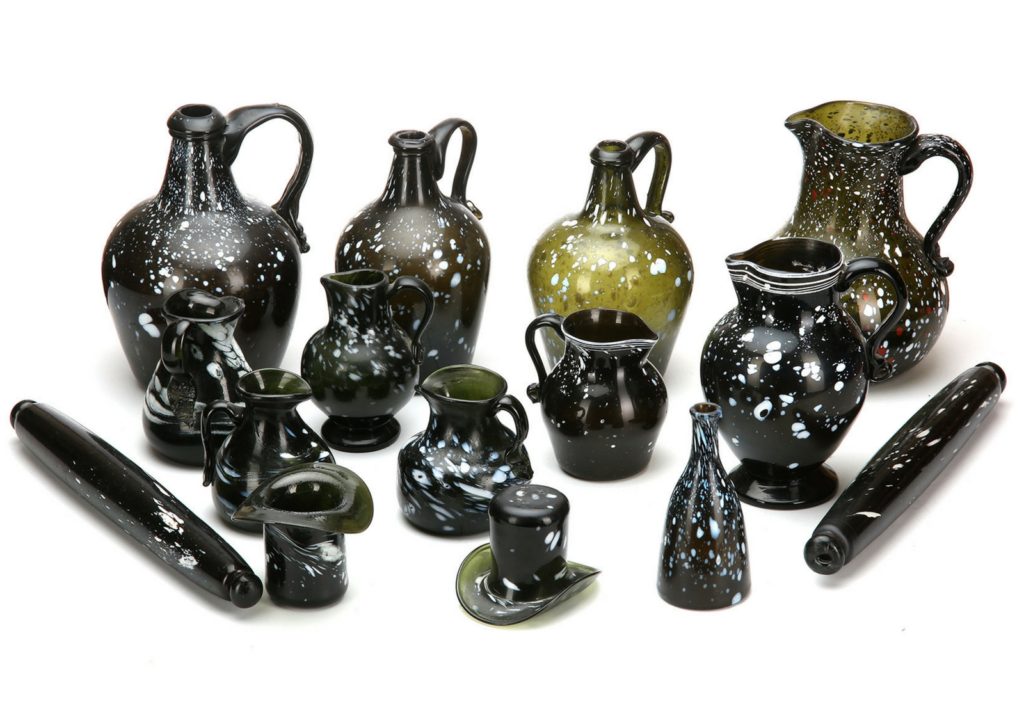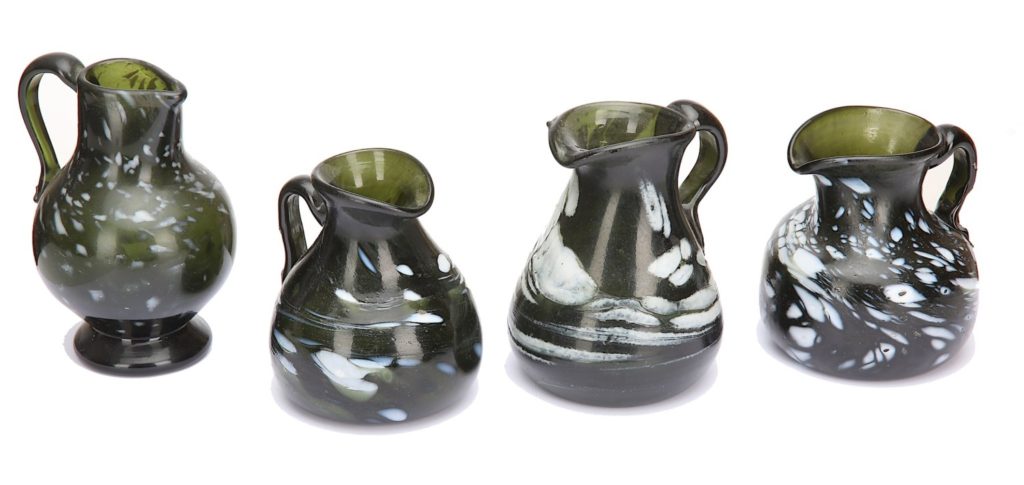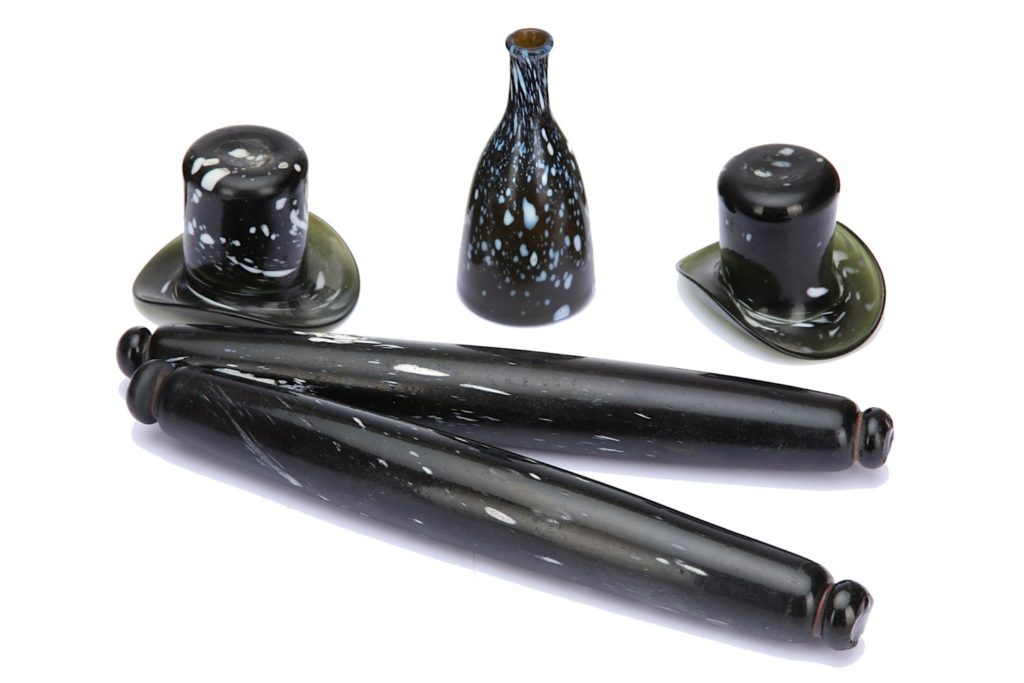Nailsea Glass: A Celebration of Vernacular British Craftsmanship
Private Collection of Nailsea glass offered in auction of Ceramics & Glass
05/02/2018 Chiswick Curates, Ceramics & Glass

A private collection of early Nailsea-type glass. Ceramics & Glass, 13th February. Estimates from £200 - £600.
Highly distinctive and much-loved form of British vernacular craftsmanship. A private collection offered in the auction includes some of the finest examples of early jugs, flasks, rolling pins, and even a rare pair of glass novelty hats, all flecked and trailed with the unmistakable splash decoration that defines the style.
The Origins of Nailsea Glass
The Nailsea Glassworks, founded in 1788 near Bristol by John Robert Lucas, was ideally placed for success. It stood beside a coal mine and had ready access to sand, lime, and clay — all vital ingredients for glass production. Though established to manufacture bottles and window panes, Nailsea, and similar factories across Britain, began to produce decorative pieces made from recycled bottle or window glass, often adorned with lively flecks, trails, and feathered patterns of white and coloured glass.

Lot 254. Two Nailsea or 'Wrockwardine' type glass jugs, Estimate: £400-£600.
Glass Tax and Creative Adaptation
The Glass Excise Act of 1745 introduced heavy taxes on all forms of glass production. Glasshouses were restricted to producing either high-quality flint glass or low-quality bottle and window glass, but not both. As a result, factories producing bottle glass began adapting their products to appeal to a wider market by adding decorative elements.
Lot 255. Four early Nailsea or 'Wrockwardine' type glass serving jugs, early 19th century. Estimate: £400-£600.
From Everyday Glass to Collectible Novelties
While brightly coloured Nailsea-type glass became widespread in the Victorian period, it is the earlier, simpler pieces made from repurposed bottle glass that remain especially sought after by collectors today. These items were not just functional, they were whimsical. Walking sticks, pipes, hats and swords in glass became unexpectedly popular and, despite legends suggesting they were made with leftover molten glass at the end of the day, the scale of their production and export indicates otherwise.

Lot 257. A collection of Nailsea or 'Wrockwardine' type glass, early 19th century, Estimate: £250-£350.
Why Collect Nailsea-Type Glass Today?
Distinctive British heritage: Each piece carries the story of regional industry, innovation and adaptability.
Accessible price points: Early Nailsea-type pieces remain modestly estimated, yet are increasingly sought after.
Decorative and tactile: Their quirky forms and glassy swirls appeal to both traditional and modern design sensibilities.
Curious About Nailsea Glass or Decorative Design?
If you own glassware or ceramics and would like to know more about its history or potential value, our Design Department offers free valuations and expert advice.
Get in touch:
design@chiswickauctions.co.uk